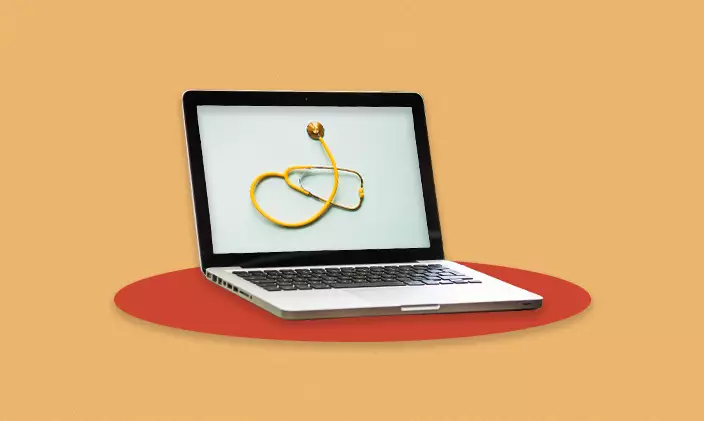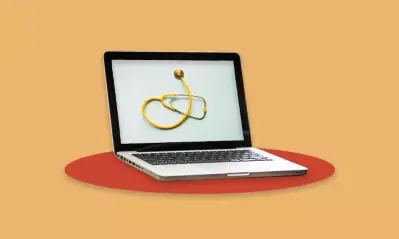Articles > Healthcare > What is health information technology?
What is health information technology?
This article was updated on March 29, 2024.

Written by Michael Feder

Reviewed by Mark Jóhannsson, DHSc, MPH, Dean, College of Health Professions

Health information technology (HIT) focuses on systems that maintain patient data and enhance patient care. Specialists who work in the field of HIT develop and maintain systems that store information, analyze data and allow for secure communication between healthcare professionals, doctors and patients.
Health information technology vs. health information management
Health Information Technology often focuses on electronic health records (EHR). While accessible EHRs that meet Health Insurance Portability and Accountability Act (HIPAA) privacy regulations are an essential part of modern healthcare, health IT comprises a diverse range of tools, from virtual appointment systems to wearable heart monitors. Examples are telemedicine platforms, medical coding software and digital imaging systems.
HIT and health information management (HIM) are two distinct but interconnected fields within the healthcare industry. HIM differs from HIT in that it’s a discipline that involves managing and using patient health information. This includes ensuring the accuracy, accessibility, privacy and security of patient records across different healthcare settings. HIM professionals are often a bridge between clinicians and administrators, as well as technology designers and IT professionals.
While HIT workers design the systems, HIM professionals use those systems to code and classify the data within patient records. They’re also responsible for ensuring compliance with regulations and medical information management.
In short: HIT focuses on the technology used to manage the information, and HIM focuses on the actual management and governance of the information itself.
Examples of health IT
Health information technology encompasses a broad range of technologies that are designed to manage and exchange health information. Some examples can include , but aren’t limited to, the following:
- E-prescribing software: Technology that allows healthcare providers to send prescriptions directly to pharmacies. This can make the process faster and more accurate.
- Patient portals: Secure online websites that offer patients 24-hour access to personal health information.
- Remote patient monitoring systems: Digital technologies that collect medical and health data from patients in one place and transmit it to their provider, often in a different location.
- Telemedicine systems: Technology that includes live videoconferencing, mobile health apps, asynchronous electronic transmission and remote patient monitoring. Telehealth systems let patients receive care and consultation remotely, improving their access to care.
- Health information systems: EHRs and medical practice management systems that providers can use to store, retrieve and manage patient information.
Health IT careers
One of the most appealing things about health IT and careers within the industry is the potential for growth. A wide variety of roles are available, from entry-level or early-career ones, such as help desk and support center positions, to hardware and infrastructure roles that help develop these products.
The U.S. Bureau of Labor Statistics (BLS) projects healthcare employment to grow faster than other sectors over the next decade , making it an exciting time to pursue a career in healthcare technology. What’s more, skills developed in healthcare technology may even be transferable to or from other tech sectors.
Potential roles available for HIT professionals include the following:
- Health information management director
- Practice manager
- Program manager
- Medical records technician
- Medical records coordinator
What does someone in health information technology do?
Health IT careers typically involve designing and building the tools that health providers use to manage and organize patient health data. That means creating technologies to secure and manage that information to protect patient privacy. Typical job duties for someone in this role can include:
- Building out software for the management of patient health data
- Designing tools to help improve interoperability between health technology systems
- Troubleshooting and maintenance of health information systems
- Securing patient data by implementing security measures against unauthorized access
- Integrating healthcare systems to ensure data flows between departments and facilities.
One thing to remember is that specific duties will vary widely, depending on the role within the HIT field. For example, health IT consultants might focus more on advising organizations on how to improve their use of technology, while health informatics specialists work specifically on data analysis and reporting.
Where does someone in health information technology work?
HIT professionals can work in many different settings. Because their skills are necessary wherever health data is collected, stored, processed and used, they have flexibility in choosing their workplace. Common places of employment for health IT workers include:
- Hospitals and clinics
- Healthcare IT companies
- Insurance companies
- Government agencies
- Consulting firms
- Research institutions
- Educational institutions
Skills needed for HIT
This career requires a unique combination of technical ability and interpersonal skills. It requires understanding the design processes and inner workings of the technology, along with the ability to capably and clearly explain how these things work to people who might not share that same technical skill set.
Hard skills
The hard skills involved in HIT roles primarily revolve around cybersecurity, medical coding, and building and using EHR programs, but those aren’t the only skills. Consider the following technical abilities needed to thrive in the role:
- Medical coding: Health technologists working in medical coding
need to know the appropriate diagnosis and treatment codes, including the International Classification of Diseases (ICD-10), Healthcare Common Procedure Coding System (HCPCS) and diagnostic-related group (DRG) codes.
- EHR programs: Clinical IT analysts and application specialists need to be familiar with programs and systems used to collect and organize patient data. Depending on their duties, these IT professionals may also need to know computer languages like SQL and Python.
- Cybersecurity: Because of privacy regulations, every health IT professional needs to know cybersecurity best practices. Technical staff members need to monitor the network security
of their databases and systems and ensure that firewalls and antivirus software are up to date.
- Data analysis: Health informatics
professionals need to be able to look at large amounts of data and extract information for accurate analysis.
- Attention to detail: Since mistakes can affect the chances of a positive outcome for patients, HIT professionals need to pay close attention to detail regardless of their area of specialization.
Soft skills
Some of the key soft skills that you can use or that professionals often find valuable include the following:
- Communication: HIT professionals act as a bridge between healthcare providers and IT. That means explaining complex technical concepts in simple language.
- Problem-solving: As with any tech-related field, problems can and will arise. Having the ability to think on one's feet and solve problems is crucial.
- Adaptability: Health information technology constantly evolves, whether it’s regulations, systems or practices. Professionals need to be willing to learn new things.
- Teamwork: HIT professionals are a valued part of a team, which means collaborating with other healthcare stakeholders.
- Ethics and confidentiality: Because of the sensitive nature of health information, HIT professionals must adhere to ethical guidelines and protect patient confidentiality.
- Organization skills: Working in HIT means handling large volumes of data and multiple tasks at once. Staying organized and prioritizing projects are vital.
- Customer service: HIT professionals often interact with patients, healthcare providers or other stakeholders. Strong customer service skills help ensure positive interactions.
How to enhance a career in health information technology
Whether coming to the field from another tech sector or are brand new to health IT, building a career typically starts with earning requisite degrees and certificates. That’s because specific knowledge and technical abilities are needed. In addition, even though most HIT roles don’t require direct patient care, many do require some form of licensure or certification.
Certifications and licenses
For those who want to bring existing technology skills into the healthcare sector, health information systems certification can help open those doors. Whether a candidate has an undergraduate or graduate degree, it’s possible to enhance a career and improve patient care with an understanding of informatics.
Licensing requirements for roles in this field can vary by state. Although some states do not require professional certification, some employers may make it a hiring requirement. Professional accreditation options for healthcare information technology careers can include the following:
- Registered Health Information Technician (RHIT®)
certification is for health information technicians with an associate degree who can pass the RHIT exam.
- Certified Professional Coder (CPC®)
certification has no education prerequisites, but a knowledge of medical coding is needed to pass the exam.
- The AMIA Certified Health Informatics
program is for master’s degree holders who want to advance in the field of health informatics.
- CompTIA A+
certification proves that qualified IT experts know necessary healthcare regulations.
Salaries and growth projections
Health information technology salaries vary widely according to many factors, The salary range for health information technologists can vary, but data from BLS shows that HIT professionals earned between $38,310 and $107,650, with a median wage of $62,990 per year , as of May 2023. Those who pursue management or analyst positions may have the opportunity to make more. Related IT positions include:
- Help desk or support center specialist: $45,660 and $121,920, with a median wage of $71,530
- Project manager: $57,500 and $163,040, with a median wage of $98,580
- Directors of IT and chief information officers: $101,590 and $239,200, with a median wage of $169,510
Salary ranges are not specific to students or graduates of University of Phoenix. Actual outcomes vary based on multiple factors, including prior work experience, geographic location and other factors specific to the individual. University of Phoenix does not guarantee employment, salary level or career advancement.
Over the next decade, BLS projects that demand across all healthcare occupations will grow much faster than the average for all occupations . That translates to an average of roughly 1.8 million openings projected per year. What does that look like for workers with careers that can stem from a health informatics certificate or a health information systems certificate?
For an information systems manager, the projected job growth between 2022 and 2032 is 15% . For applications analysts, experts predict job growth of 10% for the same period
. Health information management director roles — a subset of information systems managers
— meanwhile, are projected to also see 15% growth during that same span.
BLS Occupational Employment Projections, 2022-2032 is published by the U.S. Bureau of Labor Statistics. This data reflects BLS’ projections of national (not local) conditions. These data points are not specific to University of Phoenix students or graduates.
Is a career in health information technology a good fit?
Health information technology careers are ideal for people who want to be involved in medical care without having direct contact with patients. Though they do not provide direct care, health information technology professionals are integral to the healthcare process.
A student might choose this career path if they are interested in a career that requires technical knowledge, such as medical coding or computer programming.
Applications analysts and other information systems managers who work in medical settings need technical skills, but they also must be able to communicate with healthcare providers, both to learn about their IT support needs and to show them how to use computer systems and applications.
Finally, all health IT careers require postsecondary education, so it’s important to choose the degree program that’s right fit.
Explore programs in health information technology
If you’re ready to explore degree offerings in health information technology, University of Phoenix offers an Undergraduate Health Information Systems Certificate and a Graduate Health Care Informatics Certificate
. These certificates are designed for people who want to work in information technology within the healthcare industry.

ABOUT THE AUTHOR
A graduate of Johns Hopkins University and its Writing Seminars program and winner of the Stephen A. Dixon Literary Prize, Michael Feder brings an eye for detail and a passion for research to every article he writes. His academic and professional background includes experience in marketing, content development, script writing and SEO. Today, he works as a multimedia specialist at University of Phoenix where he covers a variety of topics ranging from healthcare to IT.

ABOUT THE REVIEWER
Mark Jóhannsson is the Dean of the College of Health Professions. He has a career spanning over 35 years of healthcare management, public health practice, higher education administration, teaching and clinical/behavioral research within corporate, community and academic settings. He has served as both an educational and keynote speaker, and he has been published in a variety of peer-reviewed and periodic literature.
This article has been vetted by University of Phoenix's editorial advisory committee.
Read more about our editorial process.



